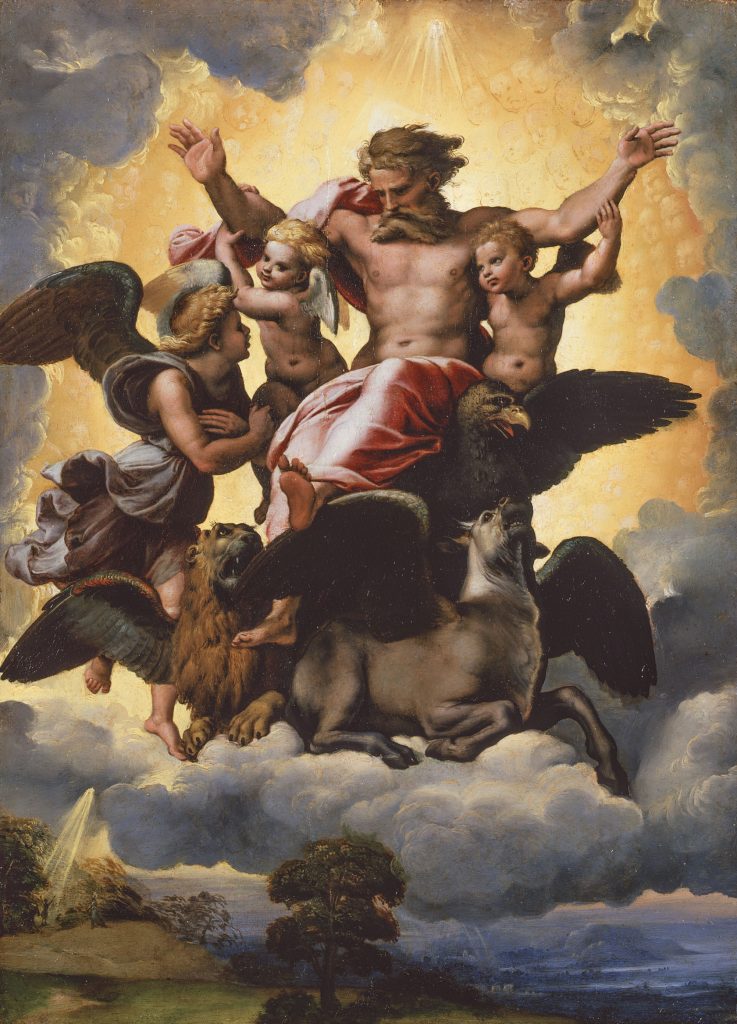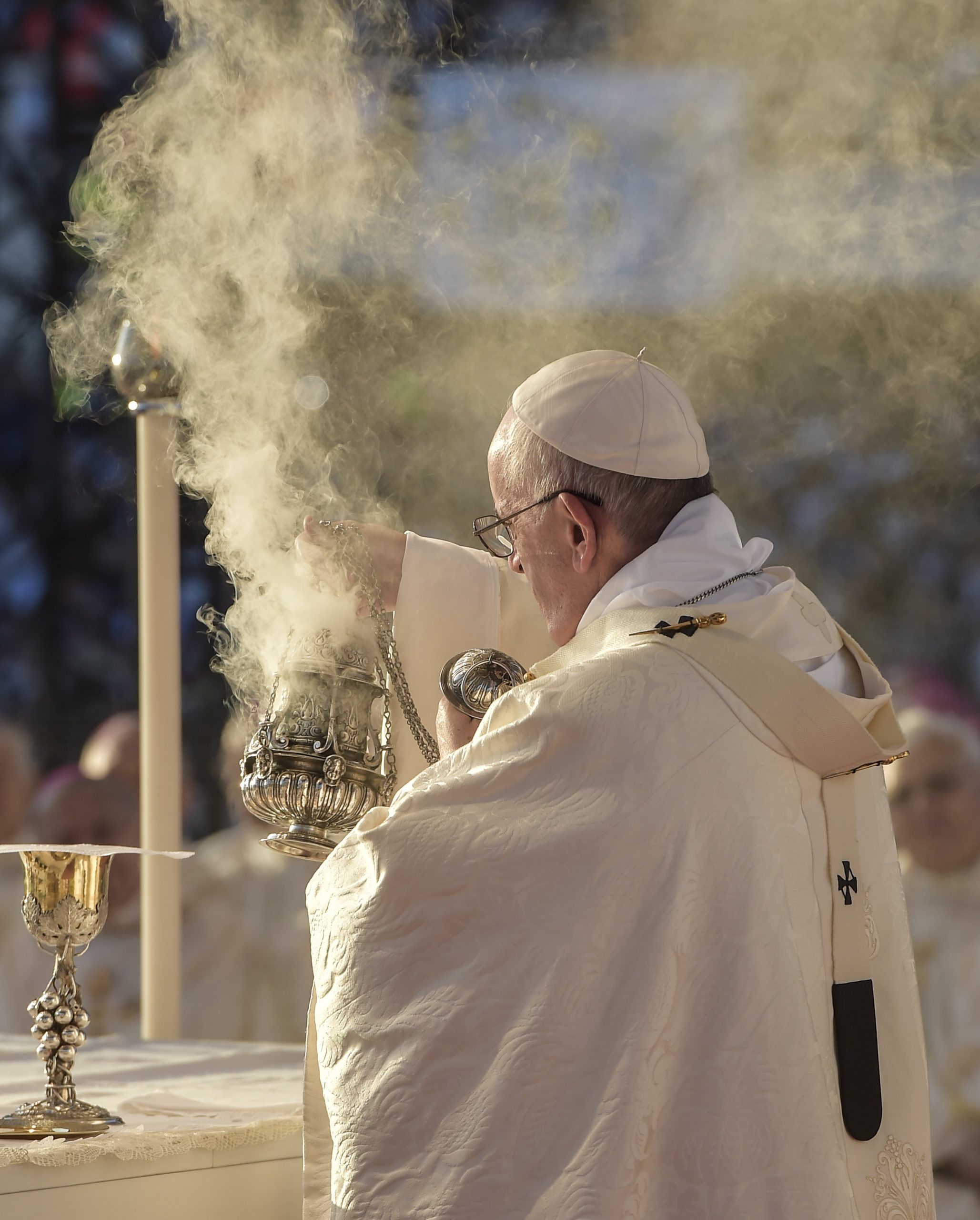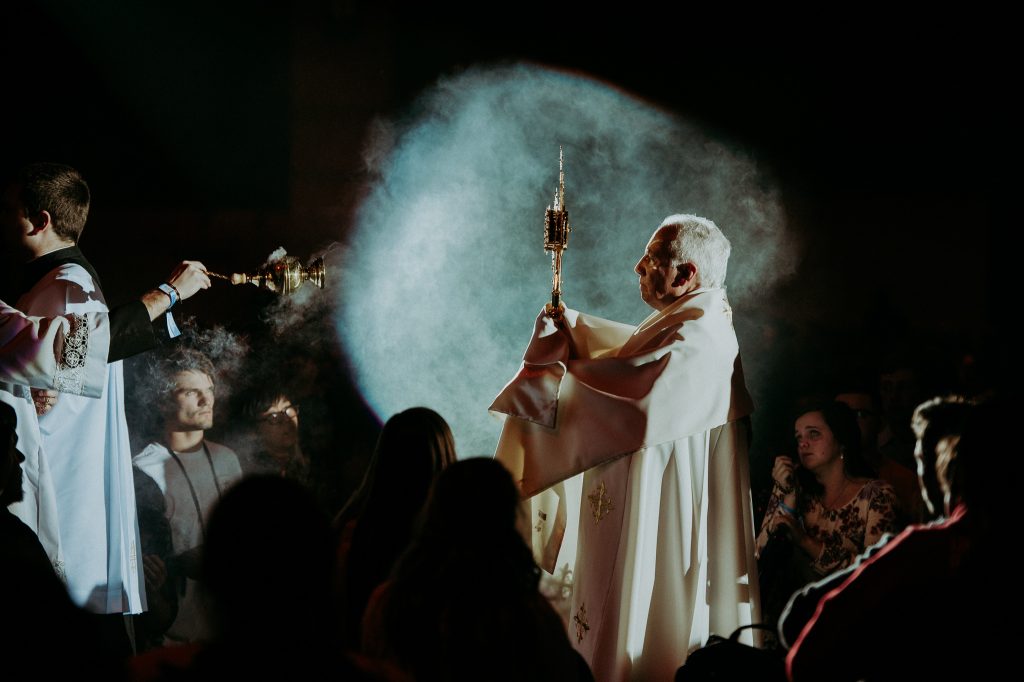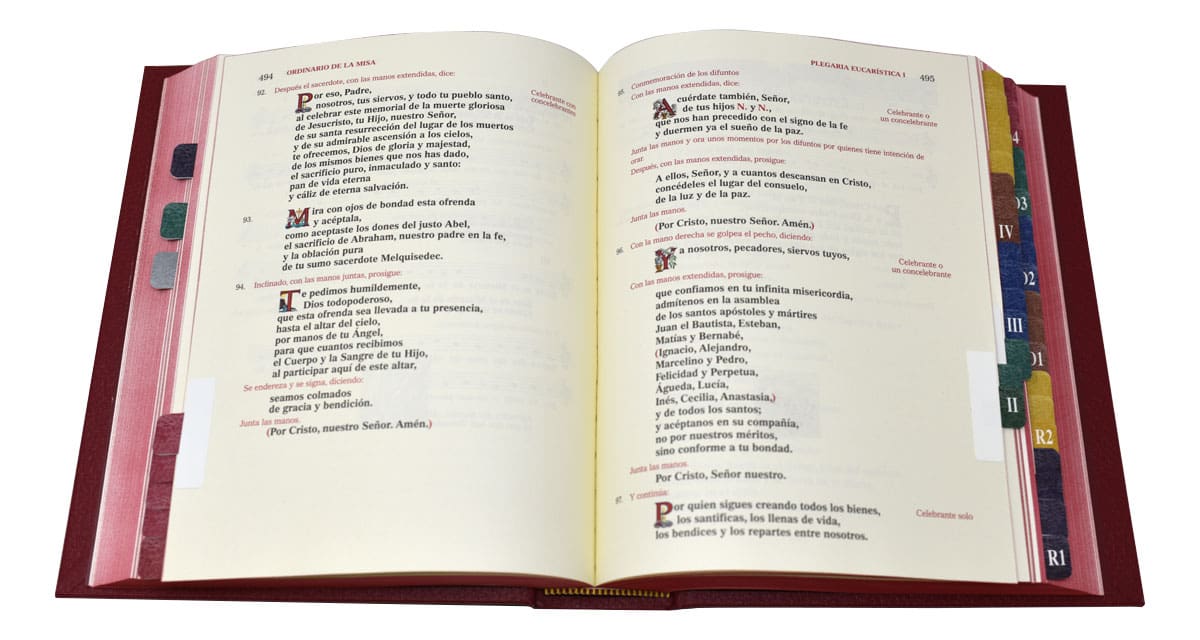A Centenary of Romano Guardini’s Spirit of the Liturgy, Part V
It’s ironic that the serious question about the apparent “uselessness” of the liturgy is answered by invoking the playfulness in the liturgy. This is the genius of the fifth chapter of Romano Guardini’s The Spirit of the Liturgy.[1]
Guardini’s reflections on the playfulness of the liturgy have been influential in different areas of thought. Johan Huizinga quoted Chapter V in his classic Homo Ludens (1938) on play as a decisive element in culture.[2] Josef Pieper, a student of Guardini, echoes his master in his philosophical reflections on Leisure: the Basis of Culture (1952), where he shows the centrality of leisure for culture, with worship at its core.[3] And Joseph Ratzinger in his main work on liturgy (The Spirit of the Liturgy, 1999) honors Guardini’s short but influential volume. The future Benedict XVI begins his work with an explicit reference to the idea of the liturgy as play, highlighting the richness but also the limits of this image.[4]
Put in Play
Why is the liturgy compared to play? What can we learn today from this idea? Let us first understand what Guardini said about this relationship between play and liturgy, and then reflect on the importance of this contribution for us today, a hundred years after these words were written.
So let us begin again by asking a more primary set of questions: Why is the liturgy so full of complicated rituals and elaborate prayers? What is the actual need, at Mass, for all the exact instructions for the ceremonies that surround what, seemingly, would be a rather simple action: the Eucharistic consecration?
Guardini’s main answer requires the careful distinction between purpose and meaning. Purpose is an organizing principle which subordinates actions towards an external goal. Projects and professions are normally organized by their purpose. But there are things in life which are purpose-less. Nature is a clear example: what is the actual practical need for so many shapes, colors, scents, and flavors? There are things that are “purposeless, but still full of meaning” (63); aimless, but significant. Along with nature we can think of the life of the soul, philosophical knowledge, and art: while these realities have no practical finality, they are full of meaning. They cannot be judged based on the criterion of functionality, but on that of significance, of meaningful existence.
These two principles—purpose and meaning—should not be seen as opposed to each other. The life of the Church shows their co-existence. As there are practical needs of administration and organization, the Church has a system of laws and ecclesiastical government which is an important part of her life. But, of course, there is in the Church “another side”: that which is free of functional practicality and has no need for an external goal to justify its existence. The liturgy is not a means to attain a certain practical objective, but an end in itself: the act of glorifying and contemplating God’s majesty.
This truth is apparent to anyone who pays attention to the abundance of liturgical prayers and rituals. Although there is certain organization based on seasons and feasts, no detailed plan of instruction, or clear and distinct purpose can be found in the liturgical life of the Church. Is this a waste of time? Do we find here a missed opportunity?
Guardini reflects at this point on two scriptural passages. The first one is Ezekiel’s vision of the Cherubim moved by the Spirit in contemplation of God’s glory (chapter 10). The second one is Proverbs 8:30-31: “I was with Him forming all things, and was delighted every day, playing before Him at all times, playing in the world.” The Son “plays” before the Father, full of meaning and pure happiness, with a delight that goes beyond any practical purpose.
In our earthly life there are two realities that offer an image of this “sublime uselessness”: the play of the child and the creation of the artist. Children do not aim at a specific functional objective when they play: they pour themselves forth in countless movements and words which beautifully express the richness of life. Artists try to give life to their being and longings without a necessary didactic aim.
The sacred liturgy, while being similar to these realities, offers something even greater: the possibility of becoming, with the aid of divine grace, a child of God. And, as this demands going beyond ordinary experience, the liturgy finds its expressions in the world of art. Thus, liturgy “unites art and reality in a supernatural childhood before God” (69). And there is nothing more important than this purposeless action. We see a glimpse of this gravity in the earnestness that both children have in setting up the rules for their games, and artists in their pursuit of the right form.
This is what the liturgy does: with “endless care” it has “laid down the serious rules of the sacred game which the soul plays before God” (71). The greatness of the liturgy does not consist only in producing wonderful works of art, but in transforming us “into living works of art before God” (71), becoming thus as little children. This is God’s solemn and joyful invitation: to “live liturgically,” to be children of the Father, to be not afraid of “wasting time,” of “playing,” of “celebrating,” of “existing” in the peaceful presence of the Eternal Father.
Paradoxically, it is here, says Guardini, that an essential didactic aim ought to be found in the liturgy: to learn the simplicity of prayer and abandonment, renouncing the oppression of always asking “why?” and “what for?”—of seeking a functional purpose to all that we do. Only in this way will we be able “to play the divinely ordained game of the liturgy in liberty and beauty and holy joy before God” (72). This is, truly, an anticipation of eternal life, which far from being some boring, endless, and fruitless passivity, will be the consummation of our existence in an unending song of praise.

Play Today
Guardini’s reflections on the playfulness of the liturgy are beautiful. The reader is at times struck by the musicality and poetic tone of some paragraphs, which are perceived even more keenly against the background of a book which, generally speaking, is very precise yet theoretical. It only makes sense: the sublime purposelessness of the liturgy is, indeed, a beautiful gift that the act of glorifying God pours into the human heart.
Needless to say, the analogy of the liturgy as play cannot be perfect. Ratzinger, in his own The Spirit of the Liturgy, pointed out two of its limitations. First, he says, since the rules of certain games or sports can become burdensome, it is essential to indicate what we are playing. The second limitation of this comparison is that the idea of the life to come remains only too vague.[5]
Aware of its merits and limitations, let us reflect now on some ways in which the idea of the “playfulness of the liturgy” can make a relevant contribution to the liturgical life of the Church today, particularly in regards to active participation.
Roles and Rules

One of the most important concepts that the Church has repeated since the dawn of the twentieth century is that of actuosa participatio. It is not merely or mainly a reference to external activity, but to an interior movement: rather than being passive spectators, all the faithful are called to actually take part in what is celebrated in the liturgical act.
The over-simplification of active participation as doing things and multiplying visible roles for as many people as possible during the liturgy has been a serious source of confusion. The analogy of play can prove helpful here.
Everyone knows that in any good game there are roles and rules. If all the participants would claim the right to do what they please, or invent roles in order to have a more active part, that game would certainly fail. If the game is to be good, there is a need for balance: knowing its rules, and actually playing it.
Knowing every single rule of a game does not mean playing it well (not to mention enjoying the game very much either). On the other hand, playing the game without knowing its logic and basic dynamic only leads to failure. We need both: rules and action. In this way we can enter into the free and different world of a game.
It is the same with the liturgy. To actually take part in its action we need to know what happens in it, and do our part. This demands a twofold act of trust in the game of the liturgy: trust in the rules (i.e., the rite) and trust in the players (i.e., the celebrant and the faithful).
In Rites We Trust
Extending the analogy of play, we could say that the rules of the game of the liturgy are found in its rite. The liturgical rite must be done with reverence and appreciation for its value. For rather than being an arbitrary and ultimately disposable set of procedures, the rite is the path to the mystery, developed slowly and organically through the centuries. Indeed, as Benedict XVI wrote about Christ’s command do this at the Last Supper, the Lord had the “expectation that the Church, born of his sacrifice, will receive this gift, developing under the guidance of the Holy Spirit the liturgical form of the sacrament.”[6]
It is this form, with its specific words and actions, that needs to be known, esteemed, and respected. Doubtless, the wisdom of millennia, with the countless generations that have faithfully prayed according to the “rules” of the liturgy, bearing abundant fruits of holiness and charity, ought to be greater than anyone’s individual creativity.
To promote a renewed appreciation of the liturgical rite we need to grow in our comprehension of it. Two privileged paths for this task are the ars celebrandi and mystagogical formation.
The priest’s art of celebrating (ars celebrandi) is former secretary in the Congregation for Divine Worship and Discipline of the Sacraments, Cardinal Ranjith, said,[7] first and foremost the art of conforming oneself to Christ the High Priest. This interior disposition becomes devout fidelity to the rite of the Church. In turn, a priest truly committed to the ars celebrandi will offer the serene and radiant experience of the mystery of the sacred liturgy without compromises or rationalizations. This experience will lead the people to see, hear, smell, taste, and touch the signs of salvation. There will be no need of useless explanations: only a “simple vision,” in the words of Josef Pieper, “to which truth offers itself like a landscape to the eye.”[8]
The main demand of this art will be to trust in the power of the symbolic ritual of the liturgy, and appreciate anew the capacity of intuitive knowledge. In a practical way, the celebrant of the liturgy should not be afraid of a language that speaks of a different world: words that are beautiful and eloquent; gestures that are visible and powerful; vestments that show the beauty and dignity of the liturgical action; nobility in the sacred vessels and buildings; music that leads into the mystery of God and is not limited to the expression of our own spiritual experience. It is not a matter of blindly following rubrics, but rather of entering into the mystery.
More concretely: a blessing should be clearly seen by everyone as the expressive gesture of the cross, sealed by a noble movement of the arm. The anointing with the sacred chrism at Baptism or Confirmation should be so generous that the symbolic aroma of the consecrated oil can be perceived as a sign of Christ’s sweet aroma. The elevation of the consecrated host and chalice should be done without haste, accompanied by the reverence proper to such a holy moment, enhanced with the sounds of bells, and, especially on solemnities, enshrined by the light shed by candles and the smoke expressed by incense. In this way, priests will offer an ample entry into the mystery of the liturgy.
The intuitively perceived ars celebrandi should be accompanied by a mystagogical path of formation. Our catechetical programs should include more mystagogy, in order to lead those being formed in the faith, particularly those preparing to receive a sacrament, into the mysteries where they will receive the life of grace. Our homilies could also be enriched by frequent mystagogical reflections. Not only are these very attractive to our people, but they also offer abundant material for an ongoing education in what we all do in our liturgical celebrations. The Fathers of the Church are a shining and imitable example of this kind of preaching. In their words we find the fine art of preparing the hearts of believers for the liturgical events of salvation without an excessive rationalistic explanation, leaving room for the mystery to speak loudly for itself, just as in the fine image provided by William Harmless[9]: a movie critic will create expectation, telling us what a movie is about without spoiling the experience of watching it directly. This kind of formation and preaching is only possible when there is an honest trust in the power of the rite (the “rules of the game”) and in the capacity of the faithful (the “players”) to receive and comprehend what God achieves through the liturgy. This leads us to our next point.

Playing Human
Guardini famously asked in a letter to the 1964 Liturgical Conference in Mainz, in the face of the challenges of modernity for liturgical reform: “Would it not be better to admit that man in this industrial and scientific age, with its new sociological structure, is no longer capable of a liturgical act?”
It would seem that many liturgists would immediately respond in the affirmative to this question: an average person of our times is not really capable of liturgical act. Consequently, because of this lack of trust in the “liturgical capacity” of the modern or post-modern person, the liturgy would need to be adapted and simplified; it should always be completely understandable to our reason, and it must not include elements that are not familiar with daily experience. Furthermore, some liturgists might argue, if we want to keep our people in the pews, we need to reduce the mystery and solemnity of the rite, introducing enjoyable surprises and a positive tone to what we do and say.
We all have heard wordy comments explaining rites and gestures that interrupt the flow of the ritual, assuming that without them we cannot grasp their meaning; we all have seen the arms of cantors raised high before congregations, as if we were incapable of realizing when to sing “Alleluia!” We all have heard homilies so full of stories and jokes, as if we were not capable of following a simple argument, and we all have experienced the shortest forms of rituals at the most important feasts, as if no one could enjoy the calm of a well-executed ceremony over an extended period of time. Aren’t the liturgical accommodations enumerated above (now hardened into common trends), rather condescending? Should we not trust more in the capacity of the human heart and offer in the liturgy what the heart is truly looking for? As Augustine said: “What does our soul desire more passionately than truth?” (In Ioa 26,5). The human heart, even in a time of relativism and confusion such as ours, still desires the truth. And it is in the sacred liturgy, most especially in the Eucharist, that we can encounter the truth of life.[10]
This desire for truth appears to be particularly relevant for young people. While in no way being the only factor, the general over-simplification of liturgical celebrations in the past decades has not proven particularly fruitful for young people in the practice of their faith. According to a recent Public Religion Research Institute study, only 7 percent of young adults raised Catholic still attend Mass.[11]
Truth Is in Play
Much has been said about millennials. One thing is true: they reject what is fake; they like authenticity. They want good things; they care for complex flavors; they appreciate uncompromising beauty. Unsurprisingly, they like games: board games that are intricate and demand attention, discipline, rules, time, and ceremony. And, also unsurprisingly, they are drawn to beautiful liturgies that are celebrated with art and without compromise.
Millennials like music that is well performed; they are attracted to chant, and hymns of beautiful melody and theology. They don’t instinctively reject the use of Latin; they appreciate the symbolic power of incense. They are grateful for homilies that challenge them and elevate their horizons. They are fascinated by the mystery. For they can understand that the liturgy is a kind of sacred play, with beautiful rules and capable participants, who are grateful to find their joy as they kneel down to adore, as good children, their Father in heaven.
[1] See Romano Guardini, The Spirit of the Liturgy (New York: Herder & Herder, 1998), 61-72.
[2] See Johan Huizinga, Homo Ludens: A Study of the Play-Element in Culture (Boston: Beacon Press, 1967), 19.
[3] See Josef Pieper, Leisure: The Basis of Culture (San Francisco: Ignatius Press, 2009), 15.
[4] See Joseph Ratzinger, The Spirit of the Liturgy, in Theology of the Liturgy: The Sacramental Foundation of Christian Existence, ed. Michael J. Miller, vol. XI of Joseph Ratzinger, Collected Works (San Francisco: Ignatius Press, 2014), 5-6.
[5] See Joseph Ratzinger, The Spirit of the Liturgy, 5-6.
[6] Benedict XVI, Sacramentum Caritatis, 11.
[7] See https://adoremus.org/2009/03/15/Toward-an-Ars-Celebrandi-in-Liturgy/
[8] Josef Pieper, Leisure: The Basis of Culture, 28.
[9] See William Harmless, Augustine and the Catechumenate (Collegeville, Minn.: The Liturgical Press, 2014), 422.
[10] See Benedict XVI, Sacramentum Caritatis, 2.
[11] https://www.prri.org/research/prri-rns-poll-nones-atheist-leaving-religion/


